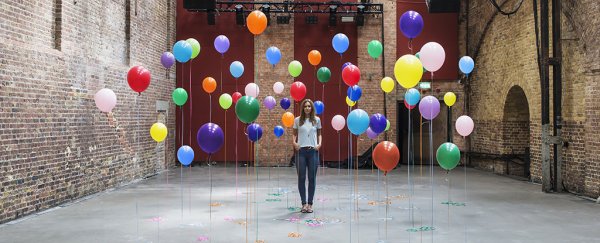We tend to split people into creative and non-creative types, but does this distinction actually exist? A recently devised training method hints that just about anyone can tap into their creativity – if they're given the right methods to unlock it.
The new method hones in on narrative cognition – in its simplest terms, our brains' natural ability to think in terms of action, cause, and outcome, like we do when we make up stories.
By approaching creativity in this way, a different set of neural processes are used compared with the current go-to method of creative training: divergent thinking (a more computational, logical approach to fostering creativity).
The researchers emphasize narrative cognition based on evidence-based observations that young children, who regularly engage in story-based play, "are more imaginatively creative than adults", yet divergent thinking is not really compatible with how kids operate.
"We as a society radically undervalue the creativity of kids and many others because we are obsessed with the idea that some people are more creative than others," says neuroscientist Angus Fletcher, from Ohio State University.
"But the reality is that we're just not training creativity in the right way."
To further their idea, the authors have come up with a narrative theory of creativity; as a method for analyzing story based art, it goes all the way back to Aristotle in 335 BCE, but here narrative theory has been applied to creativity training in a new way.
The approach is made up of three parts: world building, perspective shifting, and action generating.
To apply this in the business world, the approach could go something like this. Employees might be asked to imagine how the business would change if every customer was like their most unusual customer, for example (world building). Company staff might be asked to imagine a day in the life of someone at a different level in the business (perspective shifting), or trainees might be asked to combine two ideas together, such as two people with different motives (action generating).
Taking creativity to be the ability to "generate novel ideas that are useful", in the words of the researchers, coming up with better ways to develop creativity in anyone and everyone has potential benefits for companies, artistic groups and society as a whole.
"Trying to hire creative people causes problems because the people that leaders identify as creative are almost always people just like themselves," says Fletcher. "So it promotes conformity instead of originality.
"It's better to hire a diverse group of people and then train them to be creative. That creates a culture that recognizes that there are already creative people in your organization that you aren't taking advantage of."
So far, Fletcher and colleagues have tested their creativity training on groups from the US Army, the University of Chicago, and several Fortune 50 companies. To date there has been no scientific analysis of just how effective the new approach is, but it has found some "early success" with those who've tried it.
The argument put forward by the new paper is that the brain's machinery has evolved to be able to invent and tell new stories, and that's one of the ways we remain distinct from artificial intelligence systems – by being able to be original and craft new narratives.
While the researchers acknowledge that divergent thinking has been shown to improve working memory, critical thinking, and other brain skills, it hasn't led to the innovation and growth we might expect, given how widely it has been applied in current creativity training approaches.
That's where narrative theory comes in, and both techniques could be used together, according to the authors.
"Creativity isn't about guessing the future correctly," says Fletcher.
"It's about making yourself open to imagining radically different possibilities. When you do that, you can respond more quickly and nimbly to the changes that do occur."
The research has been published in the Annals of the New York Academy of Sciences.
